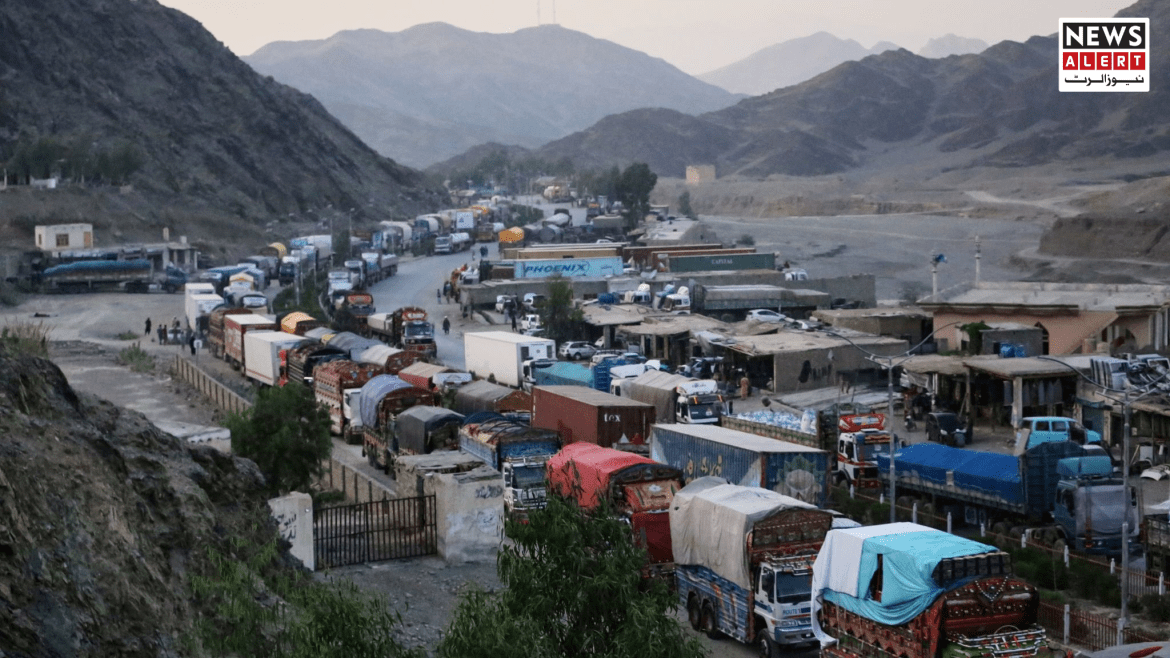Pakistan-Afghanistan Border Closure Enters Sixth Week
The closure of the Pakistan-Afghanistan border has entered its 40th day, causing severe disruptions to trade and daily travel across multiple crossing points. Major border crossings, including Chaman’s Bab-i-Dosti, Torkham in Khyber, Ghulam Khan in North Waziristan, Angoor Adda in South Waziristan, and Kharlaachi in Kurram, remain shut.
Authorities report that both commercial and personal travel have come to a standstill. At the Chaman crossing, which connects Pakistan’s Balochistan province with southern Afghanistan, trade activities and visa-based travel have entirely halted. Despite the border closure, Pakistani Levies officials confirm that Afghan nationals residing illegally in various regions of Sindh, Punjab, and Balochistan continue to return to Afghanistan via Chaman.
Long Lines of Cargo Vehicles at Torkham
In Khyber Pakhtunkhwa, the closure of the Torkham border has led to long lines of cargo trucks. Daily trade and transportation, including goods and essential supplies, are severely affected. Local traders report that delays have caused financial losses, with perishable goods particularly vulnerable to spoilage.
Similar challenges are being faced at other crossings. In North Waziristan, the Ghulam Khan border is completely closed, while in South Waziristan, Angoor Adda remains non-operational. Kurram’s Kharlaachi crossing is also shut, leaving hundreds of cargo trucks stranded on both sides of the border. These disruptions are compounding the logistical difficulties for traders who rely on cross-border routes for daily commerce.
Economic and Human Impact
The extended border closure has significantly disrupted trade, transit, and travel between Pakistan and Afghanistan. Both countries share deep economic and social ties, with Afghanistan relying on Pakistani routes for imports and exports. Local economies in border regions, heavily dependent on trade, are facing mounting pressures.
According to unofficial estimates from trade associations, hundreds of trucks carrying food, construction materials, and consumer goods are waiting at closed crossings. Traders warn that if the situation continues, losses could run into millions of dollars, and regional supply chains could face prolonged interruptions.
Moreover, the closure affects not only commerce but also social interactions. Families on both sides of the border rely on these crossings for personal visits, healthcare access, and educational purposes. Humanitarian organizations have also expressed concern, noting that aid and essential supplies could face delays due to the prolonged shutdown.
Border Security and Regional Tensions
Authorities have cited security concerns as a key reason for maintaining border closures. To understand the underlying causes of these tensions, read more here. However, the lack of official communication on reopening dates has created uncertainty among traders and travelers. Border management agencies are reportedly facilitating limited return operations for Afghan nationals, but commercial activity remains blocked.
Experts warn that unless diplomatic and security arrangements are resolved promptly, these closures could strain Pakistan-Afghanistan relations further and disrupt regional trade networks. The border shutdown also highlights broader challenges in cross-border governance and security in conflict-prone areas of western Pakistan.
Looking Ahead
As the closure enters its sixth week, traders, transporters, and local communities are calling for urgent measures to reopen crossings. While authorities work to balance security concerns with economic needs, the prolonged disruption underscores the vulnerability of border regions and the interconnectedness of Pakistan and Afghanistan’s economies.
Without immediate resolution, the ongoing shutdown could continue to damage livelihoods, slow trade, and exacerbate existing humanitarian and economic challenges in the region.















